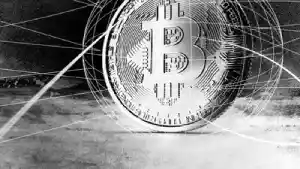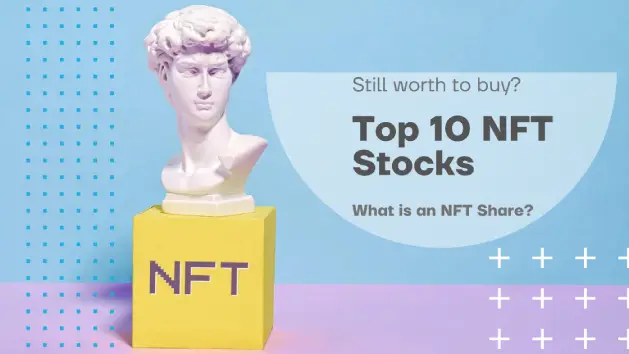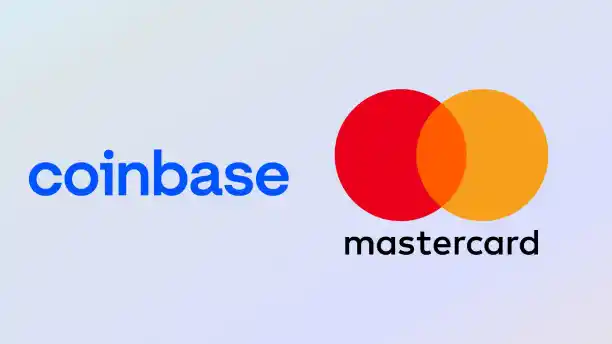33 min to read.
What is Polkadot? Polkadot Price Prediction
Is Polkadot a good investment? What does Polkadot crypto do? How is Polkadot different from Ethereum?

Table of Content
- What is Polkadot DOT: Web3 Decentralized Internet Platform
- What is Polkadot: project goals and history
- How to buy DOT cryptocurrency and where is the best place to store it
- Where to buy polkadot coin
- The best ways to make money on Polkadot & Earn Polkadot
- Polkadot cranes
- Investment (HODL) DOT
- Staking Polkadot & Best Place to Stake Polkadot
- Trading on crypto bridges
- Polkadot Parachain Auctions
- Fundamental analysis of Polkadot
- Development team
- How Polkadot works: technical features and innovations
- Polkadot Ecosystem
- DOT Cryptocurrency Tokenomics
- DOTUSD Technical Analysis and Polkadot Price Prediction for 2025
What is Polkadot DOT: Web3 Decentralized Internet Platform
We previously reviewed cryptocurrency blockchains with their own unique rules and technologies - Bitcoin, Ethereum, Solana and other blockchains. Each of these has promising prospects and is of interest in its own right, but the uniqueness of each creates problems when they are interacted with. It is usually necessary to pay additional fees when sending money from one network to another using sites such as online exchangers.
The Polkadot blockchain is one of the first successful attempts to address this issue, resulting in the creation of a zero level blockchain on which other blockchains can run. Additionally, the project intends to serve as the basis for a new version of the Internet called Web3, in which all data (not just cryptocurrencies) is stored securely on the blockchain, protected from hackers, forgers, and censorships reliably.
What is Polkadot: project goals and history
Polkadot is a platform aimed at creating a blockchain-based decentralized Internet, Web3. The project offers tools to simplify the interaction between blockchains, platforms, oracles and other networks - they remain independent, but through the Polkadot network they can quickly and securely exchange information. The project's cryptocurrency is DOT, the official website of the project is polkadot.network.
In other words, Polkadot seeks to combine independent blockchains of the first / second level into a single system and for this become the zero level (Layer 0), on the basis of which one of the versions of the third generation of the Internet called Web3 will work:
The first version of the Internet was a big library: you went to websites and studied information there. The Web 2.0 period began after the creation of the first social networks, where users began to create content themselves - and it continues today. As for the third generation, there is still no exact definition, one of the ideas is the creation of Web3, the Internet on blockchains.
Web3 is often confused with Web 3.0, but the essence is quite different. The idea of Web 3.0 was invented back in 2007 and it meant the Internet, in which most of the interaction takes place not between people, but between machines based on the semantic web. In turn, the term Web3 means decentralized Internet on the blockchain and was coined by none other than Polkadot creator Gavin Wood in 2014. However, Web3 does not exclude the idea of Web 3.0.
Recently, the idea of Web3 has gained great popularity - including due to the popularization of NFTs, which are responsible for online property in this system. Why do we need such an Internet? It solves several important problems:
- protects user data due to anonymity;
- authors retain full rights to their content;
- censorship and monopoly are excluded;
- the need for banks and other financial intermediaries disappears;
- eliminates the human factor in many operations.
It looks great on paper, but at best it will take another 10 years before the full implementation of all Web3 ideas. And it’s hard to believe that billions of users will immediately stop using social networks and other services from IT giants - they are simple and convenient, unlike many decentralized services. However, the idea of a free Internet is popular, gaining support, and has great potential for the future.
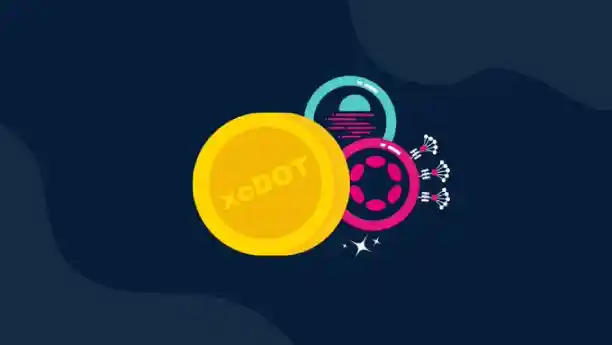
Polkadot is one of the first projects in the niche and attracted a lot of attention: for several months it managed to jump into the top 10 capitalization and gain more than a million followers on Twitter. The growth rate is about the same as that of Ethereum, which indicates the value of the project and good marketing:
-Twitter followers graph of dot btc eth add here-
Speaking about the value of the project, it is worth mentioning some of its features:
- simplifies the interaction between blockchains;
- allows you to send cryptocurrency from one blockchain to another directly;
- allows you to quickly create a blockchain compatible with other projects;
- high scalability due to the common blockchain protection system;
- an open management system available to the owners of the DOT cryptocurrency;
- innovations are tested in real conditions through the Kusama network.

The history of Polkadot began in 2016 after Gavin Wood left Ethereum. The slow development of the project led to the idea to create its own blockchain, capable in theory of surpassing Ethereum in terms of scalability and technological solutions. The Web3 Foundation was registered to manage the project in Switzerland, and Parity Technolgies became the contractor. The project has raised nearly $300 million in funding so far:
The largest funding round took place in 2017 — the project raised $145 million through ICO. Unfortunately, the wallet was hacked and the hackers managed to steal $90 million. This was a strong blow for the future project, but the remaining funds were still enough to continue the work. In 2019, the team sold another 500,000 tokens (after the 2020 denomination at a ratio of 1:100, this is 50 million tokens) worth $60 million.
In the same 2019, the Kusama experimental network was launched - the prototype of Polkadot, on which various mechanisms and innovations are being tested. The mainnet went live in May 2020, and three months later, the DOT cryptocurrency became available for purchase on exchanges at a price of $2.9. Since that moment, the price has increased several times, at the peak it reached more than $50:
-consider widget add here-
Despite the fact that the DOT cryptocurrency has appeared relatively recently, it is not difficult to buy it and make money on it - now we will look at the best options and ways to do this.
How to buy DOT cryptocurrency and where is the best place to store it
Before buying any cryptocurrency, you need to decide on the wallet where it will be stored. In it you will receive an address to which you can receive money after the purchase:
There are many crypto wallets that support the Polkadot network, here are good options for each type:
-add here-
Briefly about each of the options
- Binance is the largest exchange where you can buy/sell/exchange cryptocurrencies with very low fees. Best suited for traders (hundreds of pairs to trade), but for long-term investors, the option is also not bad - the protection on the exchange is quite good and there are many ways to earn money, including staking Polkadot at 12-17% per annum.
- Guarda is a mobile application with a good level of protection: the company does not store your data, you can set up fingerprint or FaceID protection, the wallet code is publicly available. Supports a large number of cryptocurrencies, including their purchase and exchange.
- The Ledger is the most famous cold wallet, a hardware device without a permanent internet connection. That is, it is almost impossible to hack it - only if the owner himself issues a private key. Depending on the model, the device costs $100-200.
- Polkadot.js is the official Polkadot wallet as a browser extension. It has many functions for DOT owners: staking, participation in network management, various voting.
- Atomic Wallet is a popular desktop wallet with Polkadot support (there is also a mobile version). It also allows you to buy and exchange cryptocurrency.
Thanks to low fees when sending DOT to another address, you can change the storage location at any time:
After creating a wallet and receiving an address, it remains only to choose a purchase method. I wrote about them in detail in this blog article - I got 10 different options (with detailed instructions for beginners). To compare prices and commissions, it is advisable to study each method of purchase. The ability to purchase DOT is present in some wallets from the list above (Binance, Guarda, Atomic Wallet, etc.), it is also worth considering alternative methods:
Polkadot is a fairly new project and many services like payment systems and p2p platforms do not yet support cryptocurrency. Exchangers are the fastest to respond - there are dozens of sites where you can exchange almost any electronic currency for DOT, and without verification, but with a certain commission. Sometimes unscrupulous services come across, so I strongly recommend using monitoring exchangers - they weed out scammers and offer only reliable sites.
After you become a happy owner of the Polkadot cryptocurrency, you should immediately think about ways to earn extra money on it.
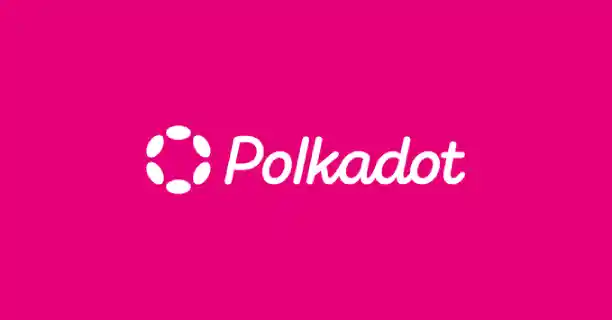
Where to buy polkadot coin
The 1Inch Network and PolkaSwap are two decentralized exchanges that enable users to purchase DOT tokens.
Polkadot can be purchased through cryptocurrency exchanges if you are planning to use U.S. dollars or another form of fiat currency. DOT can be bought and sold on the following exchanges:
| Binance | NovaDAX | AEX |
|---|---|---|
| Coinbase Exchange | ZebPay | Zonda (BitBay) |
| Gate.io | Foxbit | BKEX |
| Huobi Global | Bitexen | Bibox |
| KuCoin | Independent Reserve | Dcoin |
| FTX | BitTurk | BTSE |
| Kraken | digitalexchange.id | LATOKEN |
| Bithumb | BitWell | PayBito |
| Coinone | XT.COM | CoinTiger |
| Bitfinex | Dex-Trade | Changelly PRO |
| Binance.US | AAX | HitBTC |
| Poloniex | BitMart | Tapbit |
| Gemini | KickEX | OceanEx |
| Coinlist Pro | Acala Swap | ABCC |
| Bittrex | Deepcoin | Bitay |
| Bybit | ACE | Mexo Exchange |
| OKX | WOO Network | BITStorage |
| Phemex | Biconomy Exchange | Korbit |
| LBank | Digital Financial Exchange | CoinFLEX |
| Crypto.com Exchange | Biswap | Huobi Korea |
| AscendEX (BitMax) | Giottus | PancakeSwap |
| Binance TR | Emirex | Bit.com |
| Blockchain.com | MDEX | CoinW |
| Indodax | MDEX (BSC) | Mandala Exchange |
| Tokocrypto | Nomiswap | Satang Pro |
| Okcoin | Pandora | Altcoin Trader |
| WazirX | BakerySwap | bit4you |
| ProBit Global | P2PB2B | LCX Exchange |
| MEXC | DigiFinex | Pexpay |
| FMFW.io | Tidex | BigONE |
| PancakeSwap (V2) | Pionex | Quidax |
| BitGlobal | BitForex | Coinstore |
| WhiteBIT | Bitget | BitCoke |
| Upbit | Nominex | Hotcoin Global |
| Bitrue | Paribu | Venus |
| Bitvavo | CoinDCX | Bit2Me Pro |
| BtcTurk | Pro | Bitpanda Pro | Bitazza |
| Bitbank | Helix | Bitcoiva |
| Bitbns | MAX Exchange | LiteBit.eu |
| Bitkub | CEX.IO | MakiSwap |
| Reku | EXMO | Vauld |
| CoinEx | Lykke Exchange | OpenLeverage |
| Decoin | WaultSwap (BSC) | ZT |
| Jubi | CoinSwap Space | LocalTrade |
| VCC Exchange | Bilaxy |
DOT can be traded on some cryptocurrency exchanges through the USD Coin (USDC) trading pair, one of the most popular stablecoins in the market. The following exchanges facilitate the purchase and sale of DOT and USDC:
- KuCoin
- Bybit
The best ways to make money on Polkadot & Earn Polkadot
Since the project gained popularity not so long ago, not all ways of making money on cryptocurrencies are available for it. Well, those that can be used are already well known to you.
Polkadot cranes
Almost from the very beginning of the existence of cryptocurrencies, special faucet sites appeared, where you can receive coins for simple tasks. Polkadot entered the exchanges quite recently, so the cryptocurrency is rarely found on such sites, but there is still one - Coinfaucet.net . On it once an hour you can get from ~0.0025$ to ~300$:
In general, there are a lot of such sites - in the review of crypto faucets on the blog, I selected more than 50.
If you accumulate a lot of DOT, if the price rises, there will be additional earnings - a seemingly small amount may well grow several times. Given that you don’t need to do anything except click once an hour, this is a pretty good way to earn cryptocurrency if you have free time. You can also use several similar sites at once and accumulate cryptocurrency faster.
Investment (HODL) DOT
The easiest way to make money on cryptocurrencies is to buy them once and not sell them for a long time. This approach to investing in cryptocurrency has helped many people become Bitcoin millionaires in their time, and there is no reason to believe that the scenario will never be repeated with any other cryptocurrency. Polkadot may well be one of them - the potential of the project is unlikely to be revealed even by 25%. However, due to the high competition in the industry, there are risks, so you should keep several promising cryptocurrencies in your portfolio at once.
Due to the risk of remaining in the shadow of other projects, the share of Polkadot in the crypto portfolio, in my opinion, should be less than that of the clear market leaders Bitcoin and Ethereum. In theory, this should be offset by more upside potential:
-add here dot vs btc-
In 2021, the yield of DOT turned out to be several times higher than that of Bitcoin, and this will happen quite often if the prospects of the Polkadot project come to life. In my portfolio of assets , the share of DOT is about 1%, for additional income from the first day of investment, staking is used.
Staking Polkadot & Best Place to Stake Polkadot
Polkadot, like most popular blockchains today, uses the Proof-of-Stake consensus algorithm. In this regard, it is impossible to mine DOT, instead, users block the cryptocurrency in their wallets and receive passive income for this at a few percent per annum (similar to a bank deposit).
The easiest way to stake polkadot is through the Binance crypto exchange , section "Earn" => "Staking":
In this case, the exchange acts as an intermediary between you and the blockchain and takes a small percentage of the profits. To receive income, you must block the cryptocurrency for 30, 60 or 90 days. Early withdrawal is possible, but there will be a small penalty.
The second option is to use the polkadot.js wallet that I mentioned above. After installing the extension and creating an account, you will need to go to the polkadot.js.org website and select "Nominator" in the "Network" - "Staking" - "Account Actions" section:
After that, you will need to select a wallet and indicate the amount of DOT that you want to send. The list of validators that you can delegate your staking funds to can be found in the "Network" - "Staking" section:
Unfortunately, there will still be a fee, since the cryptocurrency is staked through intermediaries. In order to receive full profit, you need to create your own node (a computer that supports the cryptocurrency network). You can’t do without good technical skills and powerful hardware:
Trading on crypto bridges
Trading on cryptocurrency exchanges allows you to earn much more than when investing due to the use of leverage - this is called margin trading. For example, a leverage of 1:5 means that if the price moves by 1%, you will receive 5% profit, excluding exchange commissions. It is also possible to receive additional income through cashback:
To successfully trade on crypto-exchanges, you need to get training in trading and gain some experience on small amounts. In fact, this is a separate profession that also needs to be mastered.
Polkadot Parachain Auctions
The Polkadot project was originally conceived to simplify the interaction between crypto projects with different rules of work and data protection. To do this, developers must create parachains - blockchains based on Polkadot standards, which will be able to exchange data with other blockchains in a single system. There will be about a hundred such parachains in the future, and you can compete for a slot in the system only through an auction.
Projects are chosen by DOT owners by voting. You can partagsample, through the Slot Auction section on Binance :
For investors, it is similar to staking, with two differences:
- Blocking period of funds - up to 2 years;
- Profit comes in tokens of the project you voted for.
Such conditions encourage DOT holders to choose the most promising projects that will bring profits above the staking percentage.
Fundamental analysis of Polkadot
Typically, fundamental analysis uses company reporting and performance data. Crypto projects produce digital technologies and virtual assets, so this approach is poorly applicable to them. Instead, I evaluate the development team, technical innovations, the ecosystem around the project, and also understand the economic model of cryptocurrency.
Development team
In the process of writing reviews about cryptocurrencies, I realized that it is very important to talk about the people who directly develop projects. There are many developers in the crypto industry with experience in the largest IT companies and people from the scientific community. This is not to be considered as having no value: a huge amount of work of large teams of professionals has been invested in each blockchain to ensure that it works reliably and is protected from hacking and external control.
The Polkadot project is run by two organizations:
- The Web3 Foundation is a Swiss non-profit organization created to develop an ecosystem and support research for Polkadot and other Web 3.0 technologies.
- Parity Technologies is a company that is directly involved in the development of Polkadot and Kusama. Previously worked on solutions for Bitcoin, Ethereum and Zcash clients.
The main person in the project and the author of the Polkadot idea:
Gavin Wood is the founder of Polkadot and Kusama, President of the Web3 Foundation, and Founder and CEO of Parity Technologies. Educated at the University of York with a degree in computer systems and software development, he later received his PhD with work on musical visualization of the human-computer interface. He was one of the co-founders of Ethereum and CTO of the Ethereum Foundation, developed the popular Solidity smart contract programming language.
Gavin is a very experienced blockchain specialist, so he has a lot to say about the industry and his Polkadot project. I managed to find his interview in Russian, I recommend listening if you are planning to invest in DOT cryptocurrency:
Together with Gavin Wood, they started the Polkadot project:
Robert Habermeyer is the co-founder of Polkadot and a developer at Parity Techologies. Instead of university, he chose to work in the blockchain industry, which was helped by the Till Scholarship program for young professionals. An active member of the Rust programming language community, he explored the possibilities of creating efficient highly parallel solutions in blockchains, distributed systems and cryptography. In 2020, he became a co-founder of Hupersphere Ventuers, a venture fund that deals with blockchain projects.
Peter Chaban is a co-founder of Polkadot, a developer at Parity Technologies, and since 2019 a CTO at Web3 Foundaton. He received his master's degree from Oxford with a degree in engineering, studying Bayesian machine learning. Worked on a large number of projects in the financial and analytical industries. Founder of the PlantingSpace project, who is working on a system that can understand heterogeneous information and give answers based on machine learning.
According to datanyze.com , Parity Technologies now employs about a hundred people:
In addition to Polkadot itself, the team is working on Substrate, a framework that allows you to create specialized blockchains for different tasks. Polkadot is also implemented on it, as are parachains.
There are a few other people worth mentioning:
Aeron Buchanan is Vice President of the Web3 Foundation and PhD in Robotics from the University of Oxford. Has been involved with Web 3.0 technologies since inception. Worked at Ethereum in 2014-2015.
Reto Trinkler is a Web3 Founation board member, founder of Trinkler Software, and co-founder of the Melonport blockchain platform.
Jutta Steiner is the co-founder and former CEO of Parity Technologies. She served as the head of the security department at Ethereum.
As you can see, a team of professionals with extensive experience is working on the project, it is interesting that many came from Ethereum. Let's see what the developers of Polkadot came up with to fight for the market with such a competitor.
How Polkadot works: technical features and innovations
The main feature of Polkadot is not one blockchain like Bitcoin, but a platform for the interaction of other blockchains. The so-called "zero level" is called Relay Chain - the heart of the entire system, which is responsible for data protection, consensus and compatibility of autonomous blockchains.
In the diagram, this is the central circle, which shows the relationship between Parachains (outer circle) - blockchains connected and compatible with Polkadot. They work autonomously and independently of each other, but thanks to the Relay Chain they can easily exchange data. For example, to carry out cryptocurrency transfers from one network to another using Bridges - “bridges” connecting parachains with external blockchains like Bitcoin and Ethereum.
The number of parachains in Polkadot is limited, there will be about a hundred of them in total. Blockchain can get a parachain slot only through the auction, which I wrote about above in the ways to earn money. If the project does not need to constantly interact with the Relay Chain, it can connect to the system through Parathread , a more economical model of interaction with pay-as-you-go. A system with Parachains and Parathreads has great potential to scale because most of the workload remains on offline blockchains, while Polkadot provides synchronization and security. A similar principle will be used in Ethereum 2.0 with the introduction of 64 shards - branches of the main blockchain, working in parallel.
What crypto projects can become part of Polkadot? Those that meet two conditions:
- Can quickly and compactly generate block validity proofs;
- Can verify transactions by independent authorities or smart contracts.
Blockchains based on Bitcoin do not meet these characteristics, especially in terms of the second feature - there is simply no such mechanism in the main cryptocurrency. Ethereum, in turn, fits the criteria well and can work with Polkadot through bridges. Well, the best results, of course, show specially designed parachains of new projects.
The security of Polkadot is backed by the Nominated Proof of Stake or NPoS consensus algorithm. This interesting system is slightly different from the classic Proof of Stake: validators (network nodes that form blocks and verify transactions) are chosen by nominators (DOT owners) by voting, this happens several times a day.
Validators must have good processing power and 100% uptime to maintain their reputation and consistently win votes. They are also required to keep a certain amount of DOT in their wallet as collateral. Validators confirm transactions in the Relay Chain, while collators do this in parachains . And, finally, all participants in the process are monitored by fishermen - they receive a reward for detected scammers.
The security system, which is complicated in words, shows itself well in practice. At the same time, individual parachains have some freedom and can establish their own rules of operation if necessary. The main requirement is to ensure compatibility with the Relay Chain.
Another important safety factor is a "canary network" called Kusama. It develops new ideas and technologies that constantly appear in the blockchain industry and can be used in the main network of Polkadot. It also consists of Relay Chain and Parachains, but thanks to the changed control parameters, it works four times faster. Kusama's goal is not to secure the network or increase the price of cryptocurrency, but to find and even provoke vulnerabilities and errors, so I do not consider it as an investment goal.
Polkadot brought a lot of interesting innovations to the blockchain industry, but the most popular is still the “grandfather” of Bitcoin. The reason is simple - it is already used by tens of thousands of companies, applications and services. Only rapid ecosystem growth can create real competition, so let's see how Polkadot is doing.
Polkadot Ecosystem
According to parachains.info , 162 projects are currently participating in the Polkadot ecosystem:
And there 56 projects on the Kusama testnet:
Compared to Ethereum and Solana, the number of projects is much smaller. And yet, smart contract platforms cannot be directly compared to Polkadot, which serves as a platform for hosting and collaborating different blockchains – not all projects need this approach. In addition, the number of slots for parachains is limited and they are distributed through an auction.
Despite the small number of projects, Polkadot occupies a good position in the ranking of the decentralized finance sector:
At the same time, TVL (the amount of funds blocked in DeFi applications) is mainly distributed among the projects that won the parachain auction:
Here is their brief description:
Statemint is a parachain for creating digital assets on the Polkadot network. The user can create his token after depositing a certain DOT or KSM.
Acala is a smart contract platform optimized for DeFi applications. Clover Finance is a blockchain infrastructure platform aimed at interoperability in DeFi applications.
Astar Network is a decentralized application platform for Polkadot with the ability to earn money by supporting projects through staking.
Moonbeam is an Ethereum-compatible smart contract platform powered by Polkadot.

Parallel Finance is a decentralized money market protocol that offers deposits and loans in the Polkadot ecosystem. Contributors can lend and stake at the same time to earn double the returns on their DOTs.
As slots for parachains increase, we can expect Polkadot to rise in the ratings of various sectors of the crypto market and expand the possibilities of the ecosystem.
DOT Cryptocurrency Tokenomics
To assess the long-term prospects of a cryptocurrency, it is important to understand its underlying economic model. Unlike traditional currencies, the economy of cryptocurrencies is programmed on the blockchain and the main parameters like emission and inflation are most often known in advance. A striking example is Bitcoin: we know for sure that mining income is halved every 4 years and this reduces BTC’s own inflation.
In turn, Polkadot tokenomics is quite unpredictable and depends on several factors. For starters, here is the total number of DOT coins at the time of writing:
The Initial token distribution of DOT is as follows:
- 3.42% is allocated to Private Sale Investors
- 5.00% is allocated to SAFT Investors
- 50.00% is allocated to Auction Investors
- 11.58% is allocated to Future Sales
- 30.00% is allocated to Web 3 Foundation
To round it up, there are about a billion DOTs on the market. There is no maximum supply, which means that the cryptocurrency is inflationary and will lose in price with constant supply and demand factors. The increase in the number of DOTs in the system is due to staking, the interest on which attracts investors and helps to increase the number of network users. Interest rates are not constant and change depending on the % of all DOT cryptocurrency in staking:
Explanations for the chart:
- The horizontal axis is the percentage of DOT in staking from the total amount (hereinafter %DOT);
- The vertical axis is the annual staking rate;
- Green line — staking rate change depending on %DOT;
- The blue line is the inflation rate.
Thus, the more DOT is staked, the lower the yield falls and the lower inflation is, down to a minimum of 2.5%. The maximum inflation rate will be at %DOT at 50%. At the time of writing, the situation is as follows:
This is quite a large value, which forces many owners of the Polkadot cryptocurrency to use it in staking - otherwise, every year they will lose 8% of their investments without taking into account supply and demand factors. Accordingly, the %DOT value is likely to grow in the future, for example, in Solana and Cardano, this figure has already reached 70%. In this scenario, inflation will be around 3%, but there are strong doubts that %DOT will reach this value due to a sharp decrease in staking yields. I think the maximum is 60-65%.
In addition to inflation, Polkadot emission is affected by the presence of the treasury, which is replenished from network commissions. The money from there can be used for various purposes that the community will approve:
- deployment of blockchain infrastructure;
- network security audit;
- ecosystem development;
- marketing events;
- software development.
If enough offers are not received within a period of 1 month, 1% of the remaining treasury is burned to stimulate the community. At the time of writing, this is about 250,000 thousand DOT:
It turns out that about 3 million DOT per year is burned in this way, which reduces inflation by about 0.3%. Most likely, in the future, the treasury will become even larger due to the increase in the popularity of the blockchain and burning will accelerate.
As a result, we can conclude that buying Polkadot cryptocurrency for investment without staking does not make sense due to high inflation. Also, in the long term, the inflation rate can remain high, which does not look good compared to cryptocurrencies like Cardano and Solana, which will be getting closer to becoming deflationary every year.
DOTUSD Technical Analysis and Polkadot Price Prediction for 2025
In our review for the polkadot price prediction for the year of 2025, the DOT cryptocurrency looks interesting to buy in the long term for several reasons.
And here why it is intertesting according to our polkadot price prediction for 2025
- Today it is a project that is almost unique in its idea;
- Experienced development team;
- High interest on staking;
- Strong user support in social networks;
- No network downtime reported.
From the risks I would note:
- the project is still under development;
- cryptocurrency inflation may remain high in the future;
- slow growth of the ecosystem compared to competitors.
Now we have a long-term price target and we can start assessing the situation in the Polkadot cryptocurrency market right now. Is it worth buying today? This question can only be answered after examining several indicators. First of all, it is worth paying attention to the conclusions of the technical analysis:
Such an analysis is based on several indicators at once. If most of them say "buy", then the probability of a price increase in the near future is quite high - and vice versa.
To get a more accurate understanding of whether the Polkadot cryptocurrency is expensive today or not, I use the DOT to BTC exchange rate chart:
Since Polkadot is a new promising project, the profitability of its token should be higher than Bitcoin, and the DOTBTC ratio should grow in the long term. This is what happens, but sometimes the chart falls from the highs - and this gives us a clear understanding that the price of Polkadot has rolled back quite strongly and it is worth considering buying a cryptocurrency.
Also, popularity in the media is very important for cryptocurrencies. The more people talk about Polkadot, the more people want to shop. It is convenient to track the dynamics of popularity through the Google Trends service:
When the popularity of Polkadot is high and growing, it means that it is “in trend” and this has a positive effect on the price. If popularity falls, then the cryptocurrency is temporarily forgotten and this makes it possible to buy it cheaper.
To sum it up, Polkadot seems like an unusual project with great promise. The goal of creating a new Internet sounds at least pathetic, but still, the creators of Polkadot themselves came up with its concept and must understand how to implement it. From a more practical point of view, Polkadot solves the important problem of interoperability between different blockchains, which will inevitably cooperate for the further growth of the crypto market.
True, so far only new blockchains have come under the wing of the project, and large projects have not yet tried to integrate into this system. For this reason, Polkadot is likely to become a niche platform for projects that are more comfortable developing a parachain instead of creating a new blockchain from scratch. Accordingly, Polkadot is unlikely to catch up with Bitcoin or Ethereum in terms of capitalization.
